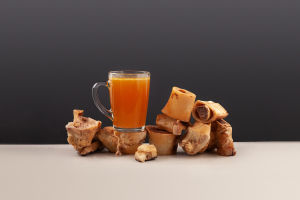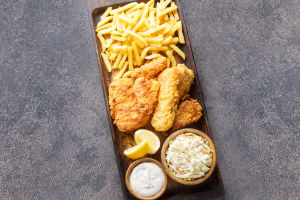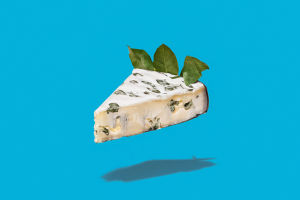
We've all seen those colorful, dramatic Bollywood movies, right? But besides the music and dancing, have you ever noticed how often food shows up on screen—especially the desserts?
Indian sweets are famous for being over-the-top sweet. So sweet that many of us can't help but wonder: Don't they all end up with diabetes? Let's explore this sugary mystery together.
India's sweet traditions go way back
In India, sugar isn't just a food—it's part of tradition and culture. From festivals to weddings and even everyday blessings, sweets are everywhere. In fact, in Hindu culture, some gods are believed to love sugar. For example, Lord Ganesha, the famous elephant-headed deity, is often shown holding a pot of sugary treats!
Giving sweets is seen as giving happiness. So when an Indian family celebrates something special—like a wedding or a baby's birth—friends and family shower them with boxes of sweets. It's their way of saying, “Here's something sweet for your sweet moment.”
Walking into an Indian sweet shop is like entering a candy wonderland
If you ever visit an Indian sweets store, be ready to be overwhelmed. The glass shelves are packed with dozens of colorful and shiny desserts—some traditional, some with a Western twist. But they all have one thing in common: they're insanely sweet! It's almost like the sugar just keeps coming and never stops.
The king of Indian sweets: Gulab Jamun
One of the most iconic Indian desserts is Gulab Jamun. These soft dough balls are deep-fried until golden, then soaked in a syrup made with rose water and saffron. Think of it like a fried donut swimming in honey—but even sweeter. When you bite into it, the syrup bursts into your mouth. Sweet overload? Maybe. Delicious? Definitely.
Rasgulla: sweet, bouncy, and full of milk flavor
Next up is Rasgulla, another round treat that looks a bit like a mochi ball. It's made using milk solids (kind of like ricotta), sugar, and a bit of flour. The result is a soft, springy texture that's soaked in sugary syrup and packed with creamy milk flavor. It's light in texture but heavy on the sugar!
Kesar Halwa: nuts, spice, and everything nice
Northern India especially loves adding nuts and spices to sweets. A great example is Kesari, a halwa (pudding) made with semolina, cashews, raisins, and saffron. Depending on how much saffron is used, the color can range from yellow to deep orange. It's soft, buttery, and full of rich, nutty flavor.
Sohan Papdi: flaky, melt-in-your-mouth sugar magic
Then there's Sohan Papdi, a square-shaped sweet that's kind of like China's peanut candy but even flakier. It's made from sugar, flour, milk, and ghee. The texture is almost like cotton candy in a cube—crispy, delicate, and it melts on your tongue. Plus, Indian spices like cardamom make the flavor really unique.
Too sweet? There are milder options too
Not everything in India is sugar overload. Some desserts like Jalebi and Imarti—both made by deep-frying spiral-shaped batter and soaking it in syrup—can actually be made less sweet by controlling how much syrup is used. Some people even enjoy them with savory dips or sauces. It's all about balance and personal taste.
So... why aren't all Indians diabetic?
Here's the surprising part: despite their sweet tooth, not everyone in India has diabetes. Why? It's a mix of reasons. First, not everyone eats these sweets every day. Many people save them for special occasions or festivals. Also, traditional Indian meals often include spices, vegetables, and legumes that help balance blood sugar.
Plus, the body can handle small amounts of sugar if people stay active. Many Indians walk a lot, especially in rural areas. And some folks even make their own sweets at home, using less sugar than the store-bought versions.
Let's not forget about naan bread
If sweets aren't your thing, Indian naan bread might be. It's soft, slightly chewy, and sometimes just a little sweet from added milk and sugar. You can eat it plain, or dip it in spicy curry, or even spread it with butter and jam. It's flexible and flavorful, and definitely easier on the sugar than Gulab Jamun!
Final thoughts: would you try these ultra-sweet treats?
So Lykkers, what do you think? Could you handle a full piece of Rasgulla, or would you tap out halfway through a Gulab Jamun? Whether you're a dessert lover or just curious about different cultures, Indian sweets definitely offer a wild ride for your tastebuds. Just remember: a little goes a long way!
Let us know—what's the sweetest dessert you've ever tried? Would you ever visit an Indian sweet shop?
Want more delicious deep-dives like this? Stay tuned, Lykkers!


